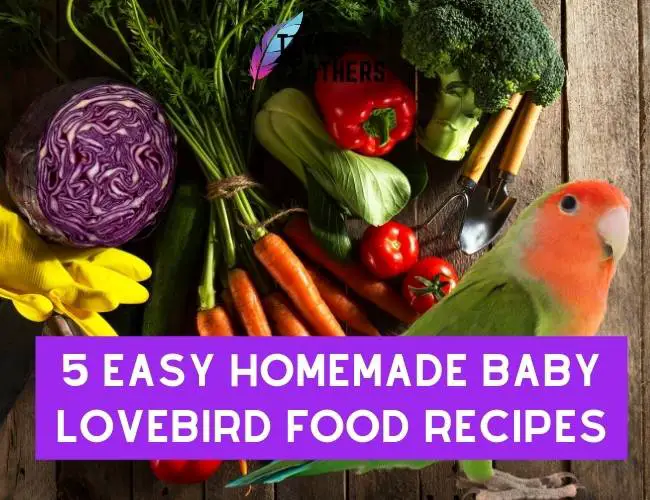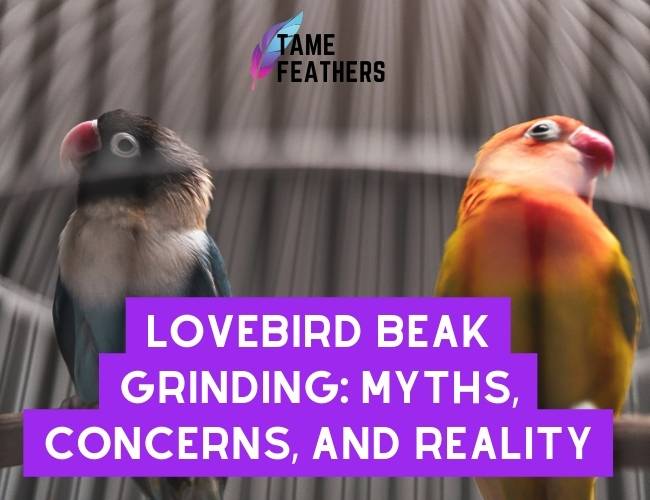You’ve arrived at the proper location.
We’ll provide you with all the knowledge and guidance you require in this post to ensure that your pet lovebirds have a cozy place to live.
We’ll explain how to assess the area they require, what characteristics a decent bird cage should have, and more.
Let’s get started by learning how to make a safe habitat that satisfies the needs of your feathery friends.
Factors That Determine Lovebird Cage Size
When thinking about the ideal cage size for your lovebirds, there are a few things to consider.Space is the most important factor – your birds need enough space in the cage to move around and stretch their wings.
This will help them stay active and healthy.
Additionally, you should also take into account how many birds you plan on keeping together; if more than one bird will be housed in the same enclosure, they’ll need an even larger space.
Lastly, make sure that there’s enough room in the cage for perches, toys and other accessories which can provide mental stimulation for your feathered friends.
Recommended Dimensions For Lovebird Cages
For single lovebirds or pairs of small species (such as peach-faced or Fischer’s), cages should measure at least 24 inches long by 18 inches wide by 20 inches high.Larger varieties such as black-masked require bigger enclosures; ideally a minimum of 30 x 18 x 24 inches with bar spacing no wider than 1/4 inch apart.
Cage Material Matters Too!
The material used to construct a lovebird’s home is just as important as its dimensions – choose something sturdy like steel wire with powder coating rather than plastic or wood structures that won’t last very long under constant use from busy beaks! Make sure all edges have been rounded off so they don’t cause any injury.Breeding Cages Need To Be Even Bigger And More Durable
If you intend on breeding lovebirds then it’s essential that you invest in bigger cages made out of tougher materials such as stainless steel mesh – this will ensure greater longevity and durability when dealing with multiple birds breeding simultaneously.A good rule of thumb is to double whatever measurements apply when choosing regular housing cages: 48x18x24 would be suitable for two pairs of medium sized species such as masked whilst 60x30x36 could comfortably house four pairs of larger varieties.
The area where air circulates needs to be big enough so that it doesn’t interfere with normal activities inside – look out for designs featuring side panels which allow airflow while still providing privacy .
Also , avoid overcrowding too many birds into one enclosure ; this not only creates unpleasant odours but can lead to disease spread due lack proper circulation .
< h 2 >Keep Your Lovebirds’ Home Clean And Hygienic < Br /> Keeping up regular maintenance and cleaning schedule helps maintain both health standards hygiene levels within birdcages .
Remove debris food scraps daily removing droppings every other day whilst disinfecting surfaces once week using mild soap lukewarm water solution rinse thoroughly afterwards let dry naturally before putting back bedding perches etc .
This simple routine prevents parasites bacteria from thriving helping prevent illness ensure happy flock !
FAQs About Lovebirds
Have You Tried This Gourmet Parrot Food?
We get so much good feedback on these Bistro Parrot Food packs! Our readers feathered friends are absolutely loving it! The best part is, it is suitable for all birds and parrot-types. Parakeets, Cockatiels, African Greys, etc. Check it out… [amazon box=”B086KLFSZQ”]We Thought You Might Want To Know This About Lovebirds… 😊
what fruit can lovebirds eathow do lovebirds mate
how to train a lovebird




